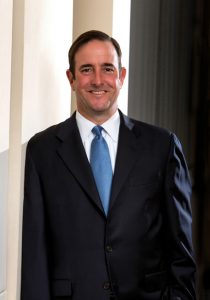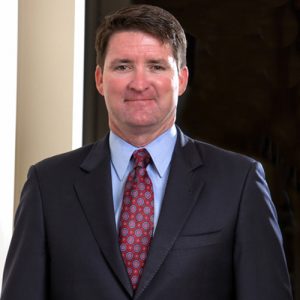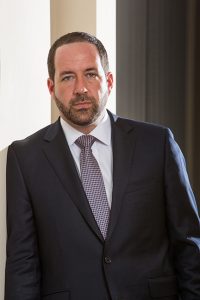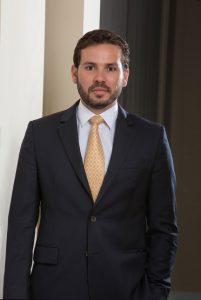The Haggard Law Firm’s William Haggard, Michael Haggard, Douglas McCarron, Christopher Marlowe, Todd Michaels and James Blecke have all been named to the 2016 Super Lawyers List.









The Haggard Law Firm’s William Haggard, Michael Haggard, Douglas McCarron, Christopher Marlowe, Todd Michaels and James Blecke have all been named to the 2016 Super Lawyers List.









The Kendall Gazette recently published an article that included Michael Haggard‘s induction into the Palmer Trinity School Athletic Hall of Fame.
Haggard graduated from the school in 1988. He played varsity football and baseball and was recognized as an All-Dade selection in both sports his senior year
Haggard Law Conducts Negligent Security Seminar During the FJA Convention this Week
Todd Michaels lead a seminar yesterday during the 2016 Florida Justice Association’s Annual Convention in Palm Beach. Michaels discussed the ins and outs of trying a negligent security case in Florida.
The seminar was part of the FJA’s Young Lawyers Seminar Series. Michaels is currently an FJA board member, the Miami-Dade County Vanguard Chair and will begin a term on the organization’s Executive Committee next week.
Recently, Michaels delivered a $1 million settlement to the family of Miguel Pilotos in a negligent security case. The 71-year-old was gunned down in a supermarket parking lot in 2013. In the last 10 years, The Haggard Law Firm has handled over 150 negligent security cases and delivered over $340 million in verdicts and settlements in those cases.
Opa Locka, Florida – The owners of the Top Value Supermarket in Opa Locka have agreed to a payout of $1 million to the Estate of Miguel Pilotos, who was gunned down on the property during a robbery Aug. 21, 2013.
The 71-year-old man was simply picking up groceries when he was shot at the supermarket located on Northwest 137th street and northwest 27th avenue. The crime was caught on camera. The gunman rode up to the victim’s car on a bicycle and pulled out his weapon and shot the husband and father in the neck. Pilotos, who had under $20 on him when he was killed, had been with his wife Aleida for 25 years. He emigrated from Cuba 19 years ago.
[mkd_blockquote text=”At the time of his murder, Miguel Pilotos was the third Top Value customer robbed and shot and the second one killed in that parking lot, in six months” title_tag=”” width=”” border_color=”#930027″]
The lawyer for the Pilotos family, Todd Michaels of The Haggard Law Firm, says the crime was predictable and preventable. “At the time of his murder, Miguel Pilotos was the third Top Value customer robbed and shot and the second one killed in that parking lot, in six months” says Michaels. He adds “despite the previous crimes, and the widespread knowledge the business was located in a high-crime area, the supermarket did not alter security in the parking lot in any way.”
Seventeen-year-old Jamal Jackson was arrested for the crime.
Coverage following the arrest of Jackson several weeks after the crime:
CBS MIAMI: http://miami.cbslocal.com/2013/09/13/arrest-made-in-opa-locka-parking-lot-murder/
Authored By The Haggard Law Firm’s Christopher L. Marlowe
When you argue that your client’s injuries could have been prevented through the use of reasonable security measures, the defendant will claim those measures are excessive or unnecessary. So what are reasonable measures, and how can you help the jury view the case through your eyes? You must first go to the crime scene and begin reviewing any security efforts that the defendant undertook.
A crucial part of evidence development in these cases is examining the premises and putting the security measures into context. For example, a client was stabbed to death in his aunt’s apartment complex parking lot as he went to the vending machines near the community swimming pool.1 The complex gave a rent-free unit to a courtesy security officer who was also a local police officer and claimed to perform three daily patrols around the property with an enormous dog and a pistol. She also submitted observation reports to management. I was deflated by this proactive security regime until the officer and on-site managers were deposed.
Through public record requests, I obtained the officer’s call schedule for her official police duties for the previous three years. The three daily patrols she claimed she conducted could not be reconciled with her documented obligations for the city police department. The nuisance crimes of vandalism and drug use at the community swimming pool were incompatible with her insistence that once she locked the common area amenities at night, the property was under control. And somehow her fellow officers failed to inform her of four robberies and a carjacking that occurred at the complex while she lived there. At trial, the plaintiff’s counsel was able to expose this façade, and the jury found the complex was 100 percent liable.
In another case, my client was shot in the face at a gas station near the Miami-Dade County Fairgrounds during the annual fair. My first few visits to the property were unremarkable, so I wondered how we could convince any jury that this ordinary gas station should have employed security. So we waited to visit again until the next year’s county fair.
By comparing surveillance video from a normal Friday night with video from the same time and date during the following year’s county fair, we were able to show the massive increase in foot and vehicle traffic during the fair. We did not advocate that there was anything wrong with the gas station itself – but we explained that for two weeks each year, it assumed an entirely different criminal profile, and increased security measures should have been deployed. Understanding your site will help you stay focused on the defendant’s duty to appreciate the foreseeable risk and act on it.

(Pictured: Attorney Christopher Marlowe)
Sometimes, when security is compromised, there will be a debate about whether armed or unarmed security was appropriate for a property. The jury is unlikely to punish a defendant for choosing unarmed over armed guards if the choice was based on intelligence and made after informed deliberations.
Other security decisions become central to the case. Premises owners and managers often use security vendors, who make recommendations for protecting the property against crime. The vendor invariably will have suggested implementing the most comprehensive security system, but the defendant chose a lesser program due to cost. Driving a wedge between the vendor and the property manager becomes very important, and you can do this with the assistance of either entity’s former employees. Defendants usually are not on the same page as their vendors about crime on the premises, the necessary remedies, or the rationale for the choices made.
Familiarity with crimes that occurred on the property is fundamental. Do not rely on crime statistics or grids. Read every police report from the property, going back at least three years from your client’s assault. What may appear to be a simple property crime can yield the greatest notice and foreseeability witnesses. For example, a police report showing theft of a cell phone from a vehicle may appear trivial and unrelated on its face. However, the victim of that property crime often will have reported it to management and felt violated by that intrusion, especially if it happened more than once. The best witness regarding notice of on-premises crimes may be a robbery victim who constantly complained to management.
As the defendant tries to distract your attention from the core issues, refocus the case on specific criminal incidents and what the defendant failed to do in response to each. Make sure to use police reports when deposing the defendant – it will force them to admit, repeatedly, that they either did not know of the crime or that they did not make any changes in response to it. Specific crimes will help you show the jury that your case is not about crime generally or in the city where the property is located – it is about crime on this specific property.
Negligent security cases can consume thousands of hours from inception to conclusion. You must contend with both criminal and civil investigations, witnesses who may reasonably fear retribution, properties in crime-ridden areas, and even clients whose presence at the time of the incident concerns jurors. To get past these difficulties, it is crucial to maintain your focus on proving that the defendant’s security measures were inadequate.
Learn more about The Haggard Law Firm by clicking here
Notes:
1. Almaguer v. MIG Pines Dev., Ltd., No. 08-50972 CA 21 (Fla., Broward Co. Cir., Mar. 25, 2010).
Miami Beach, FL – A Miami-Dade County jury has awarded 34 year old Maria Navas $1.7 million for the permanent injury she suffered when she was trampled by theater goers frantically trying to escape an altercation in a Miami Beach theater only days after a mass shooting at a movie theater in Colorado.

Jason Brenner and Douglas McCarron of the Haggard Law Firm (www.haggardlawfirm.com), who represented Navas in this case, argued that the trampling incident was preventable, especially in light of the sensitivity every American had to movie theater violence at that time. Only 11 days before the incident in Miami Beach, a gunman walked into a movie theater in Aurora, Colorado during a screening of the same movie, Dark Knight Rises, and began shooting patrons. 12 people were killed and more than 70 others were injured.
The attorneys said theater staff in Miami Beach did nothing to diffuse the initial argument between Escamillo and the movie patron. The staff also did not prevent Escamillo from returning when he initially left the theater which eventually lead to the mass exodus that caused Navas’ injuries. Considering what had recently occurred in Colorado, the theater should have taken heightened security measures.
Navas hopes this verdict will make movie theaters take note of their responsibility to protect patrons by taking actionable steps to ensure safety of every patron

CASE RESULT: Continental Real Estate Companies among defendants in $3.1 million settlement in negligent security case
21 year old shot and killed while his first child is born.
Miami, Florida – Bad lighting, broken cameras, and other insufficient security measures have lead a Miami nightclub, Continent Real Estate Companies, and others to settle with the family of a murder victim for $3.1 million in a civil case.
On November 28th, 2011 Charles Lucas, Jr. was trying to diffuse an argument between his friends and several patrons of the Kaffe Krystal Night Club in Miami (2550 NW 72nd Avenue #305, Miami, FL 33122) following a car crash in the Club’s parking lot. Lucas was shot during that argument and later died at Baptist Hospital.
While the 21-year-old was fighting for his life, his first born child was born at a separate hospital. He was trying to leave the club/strip mall after receiving a text message that his girlfriend was going into labor.
Todd Michaels of The Haggard Law Firm and Alan Goldfarb of Alan Goldfarb, P.A. argued that the club, strip mall owners, management company and security company hired to police the property did not take the necessary security steps needed to prevent the shooting despite its location in a well-known high crime area.
(Originally published for the Southern Trial Lawyers Association Newsletter)
By Christopher Marlowe, The Haggard Law Firm
We are all prejudiced, shaped by our interactions with others from birth. Some experiences are positive, others insulting. Each, to varying degrees, necessarily changes our perception of others. This writing is premised on the understanding that we are all susceptible to feelings and beliefs that are not always fair or rational. It is the recognition of this narrow aspect of the human condition that cautions the trial attorney to acknowledge Universal Truths where they exist, and the Stereotypes that often accompany them.
Having chosen a profession that revolves largely upon judging the behavior and motivations of others, identifying and appreciating our prejudice is a critical component of successfully working within the legal system. For trial lawyers, the process of moving from an abstract grievance to a concrete solution for our clients begins in earnest with jury selection.
A jury of our peers seems like a simple enough concept. However, in every jurisdiction with which I am familiar, the peer group is defined only by one commonality: an arbitrarily drawn geographic boundary. The remainder of that which defines your prospective panel is a mystery. Race, religion, gender, sexual identity and political beliefs all thrive independently behind each of the twenty or thirty faces staring back at you as you begin the process of selecting who, exactly, will stand in judgment of the situation that forced this community of peers to miss work and doctor appointments to perform their civic duty.
Continue reading “Universal Truths Vs. Stereotypes-Dealing with Ours and Their at Trial”
By Christopher L. Marlowe, The Haggard Law Firm
It was the day after Thanksgiving. Two year old Soleila Estien was taking a nap with her father in the family’s apartment in Hollywood, Florida. Her mother Vahnessa was at work, and Grandma had just dozed off with a book. Everything about this beautiful Friday afternoon was warm and pleasant.
Dad was startled awake not long after he and Soleila lay down on the couch together. She was gone. As parents usually do when searching for their toddler, dad looked behind couches, in closets, and other such places where little ones amuse themselves with hide and seek. Not having found Soleila after a diligent search while calling her name, dad woke grandmom and the two began looking with greater urgency and rising concern.

They searched in the parking lot, around trees, under cars, throughout the complex and around the apartment complex pool, and their calls turned to cries and desperate screams for Soleila. Then they saw. On the edge of the pool there sat Soleila’s little flip flops. The outline of her little body was now apparent on the bottom of the pool..
The apartment complex where young Soleila died was an aquatic safety disgrace. The gates to the pool were neither self-closing nor self-latching. The laundry facilities were located within the pool deck area, prompting residents to leave the gate open so they could carry clothes baskets back and forth without bothering with the lock. When Grabiel pulled his unconscious little girl from the water, there was no telephone on the deck to dial 911. Against time and fate he tried CPR while carrying her back to the apartment, but she was dead.
Drowning is the leading cause of injury-related death for children one to four years of age. In Florida, drowning is the leading cause of all deaths for this age category, and Florida has the highest drowning death rate for children under the age of five. For obvious good reason, federal, state and local laws have addressed these preventable accidents by attempting to regulate the safe operation of residential pool facilities.
In Soleila’s case, for example, The City of Hollywood Code of Ordinances, § 158.04 reads, in pertinent part:
“Every outdoor private swimming pool shall be completely surrounded by a fence, wall, or enclosure in accordance with the 2007 Florida Building Code, and 2009 Supplement. Such fence, wall, or enclosure shall remain in place at all times and shall not be readily removable….All gates or doors opening through such enclosure shall be equipped with a self-closing and self-
latching device for keeping the gate or door securely closed at all times when not in actual use.”
The Florida Department of Health regulation 64E-9.006(2)(h) requires that:
“All public pools shall be surrounded by a minimum 48 inch high fence or other substantial barrier approved by the department. The fence shall be continuous around the perimeter of the pool area that is not otherwise blocked or obstructed by adjacent buildings or structures and shall adjoin with itself or abut to the adjacent members. Access through the barrier or fence from dwelling units such as homes, apartments, motel rooms, and hotel rooms, shall be through self-closing self-latching lockable gates of 48 inch minimal height from the floor or ground with the latch located a minimum of 54 inches from the bottom of the gate or at least 3 inches below the top of the gate on the pool side.”
Florida Statute 515.27 and 515.29 read in pertinent part, respectively:
“All doors providing direct access from the home to the pool must be equipped with a self-closing, self-latching device with a release mechanism placed no lower than 54 inches above the floor.”
“Gates that provide access to swimming pools must open outward away from the pool and be self-closing and equipped with a self-latching locking device, the release mechanism of which must be located on the pool side of the gate and so placed that it cannot be reached by a young child over the top or through any opening or gap.”
While these laws were written with the deaths of so many innocent children in mind, too many communities either ignore them or are unaware of their existence. Acutely aware of this reality, Vahnessa and Grabiel Estien have shaped their personal tragedy into a motivating force for change and education. Since that most awful day, they have managed the toughest feat that parents often have after losing a child – staying together. And together, they have put one foot in front of the other, as one, and their newly inspired lives are making swimming pools everywhere safer as a result.
Fast forward six years from the death of their beloved daughter, and the Estien family has been blessed with the births of two sons. Teaching them to swim and enjoy the water was a sacred priority for both Vahnessa and Grabiel. They did not want their boys to fear the water. But they were determined to ensure that their children respected it and that the adults responsible for aquatic facilities did their part to responsibly operate their pools.
After the civil matter relating directly to Soleila was resolved, the family started the Soleila G. Estien Memorial Swim Strong Scholarship. The family persuaded local businesses to fund donations for families who could not independently afford swimming lessons for their children. One of the most effective awareness tools for these businesses was the book Vahnessa Estien wrote in honor of her daughter, entitled “The Boy Who Could Swim.” It is a children’s book, written with as much heart, positive messaging and hope as any story borne of tragedy possibly could be. Parents can enjoy reading to their children a positive and enjoyable story of hope, courage and safety thanks to the courage Vahnessa had to write this book.

Vahnessa and Grabiel searched their souls after their daughter’s death. Somehow they managed, for the sake of their marriage and their sons, to find the will and power to harness their grief toward a positive goal. I am certainly proud of the work we did for the family and the outcome that was achieved. However, I am mostly thankful to the Estiens who, through their own grief process, are a constant reminder to me that what we do as advocates has the ability to contribute, even a little, to the manner in which our clients live the remainder of their lives after tragedies most of us would fear to even imagine. Certainly, doing what we do every day would be much more difficult, if not impossible, were it not for clients such as these, who through their efforts, are making the next tragedy less likely than those which came before.
Article first appeared in Southern Trial Lawyer’s Association’s newsletter JUSTLAW
Author: Christopher Marlowe, The Haggard Law Firm